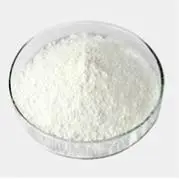- Home
- Products
- Elementary
- Boride Powder
- 3D Printing Powder
- Sulfide Powder
- Oxide Powder
- Carbide powder
- Nitride Powder
- Silicide Powder
- Hydride Powder
- Telluride Powder
- Selenide Powder
- Stearic Acid Series
- Phosphide Powder
- Nanoparticles
- Metal Alloy
- MAX Phase
- Lithium Battery Anode
- Surfactant
- Molecular sieves
- Concrete Admixtures
- Cladding of metals
- News
- Blog
- Contact
- About
Characteristic analysis of alumina powder
Characterization technology of alumina:
X-ray diffraction
X-ray diffraction is the main method to study the crystal structure of alumina. The information of lattice constant, crystal orientation and phase composition of alumina can be obtained by X-ray diffraction. Selecting the appropriate X-ray wavelength, incident Angle, and scanning range is crucial in X-ray diffraction experiments. At the same time, preparing the sample is also very important to ensure its purity and uniformity.
Scanning electron microscope
Scanning electron microscopy (SEM) is a very effective way to observe alumina powders' morphology. In SEM experiments, the sample needs to be gold-plated or carbon to increase the electrical conductivity of the electrons. At the same time, parameters such as working distance, acceleration voltage and scanning rate need to be adjusted to obtain the best observation effect.
Other characterization techniques
In addition to the above three characterization techniques, many other methods can be used to characterize the properties of alumina. The conductivity test can be used to study the electrical properties of alumina. We need to choose the appropriate characterization method to have a more comprehensive understanding of alumina.

Synthesis method of alumina:
Chemical precipitation method
By controlling the pH value and temperature of the solution, aluminum and oxygen ions are precipitated to produce an alumina precipitate. The final alumina powder is obtained after washing, drying, and high-temperature sintering. However, the particle size obtained by this method is large, and the distribution is not uniform.
Sol-gel method
In this method, aluminum salts and alcohols are hydrolyzed and polycondensation to form sol, and then the final alumina powder is obtained through aging, drying, and high-temperature sintering. However, this method requires many alcohols, the production cost is high, and the process is more complicated.
Microemulsion method
In this method, surfactant, oil and water are mixed to form a microemulsion, and then aluminum salt is added to the microemulsion. By controlling the reaction conditions, aluminum ions react with oxygen ions in the microemulsion to form alumina nanoparticles. The alumina nanoparticles prepared by the microemulsion method have a small size and regular shape. However, this method needs to use many surfactants and oil substances; the process is more complicated, and the production cost is high.
Other synthesis methods
In addition to the above three synthesis methods, many other methods can be used to prepare alumina powders. For example, the high-temperature melting method melts aluminum salts and oxides at high temperatures and then obtains alumina powder by rapid cooling. By chemical vapor deposition (CVD), aluminum and oxygen ions in the gaseous state are deposited on the substrate to produce aluminum oxide film.
Conclusion
There are various synthesis methods for alumina, each of which has its unique characteristics and scope of use. The chemical precipitation method is suitable for large-scale production, and the sol-gel and microemulsion methods can prepare high-quality nanopowder. In practical application, the appropriate synthesis method should be selected according to the specific needs. At the same time, it is important to explore new synthesis technology to improve the quality of alumina powder and reduce the production cost.

The Market prospects of alumina:
Market demand
Alumina has a wide range of applications in many fields, such as ceramics, electronics, energy, environmental protection, aerospace, etc. Ceramics and electronics are the main application markets for alumina.
In addition, with the rapid development of new energy, environmental protection, and other fields, the application of alumina in solar cells, fuel cells, waste gas treatment, and other fields will gradually increase, becoming a new market growth point.
The industry competition pattern
The global alumina market has formed an oligopoly pattern, with a few large enterprises occupying most of the market share. These enterprises have consolidated their market position by continuously improving product quality and reducing costs through scale and advanced technology advantages.
However, with the improvement of environmental protection requirements and the development of emerging fields such as new energy, some small and medium-sized enterprises with technological advantages and innovation capabilities also have the opportunity to gain a place in the market.
Technological development trend
High purity: With the rapid development of electronics, new energy and other fields, the purity of alumina is becoming higher and higher. High-purity alumina has better physical, chemical, and electrical properties, which can meet the needs of high-end fields.
Intelligence: With the arrival of the intelligence era, the functional and intelligent requirements for materials are getting higher and higher. By introducing new technologies such as sensors and intelligent control, the intelligent application of alumina materials can be realized.
Policy environment
Government policies also have an important impact on the development of the alumina market. On the one hand, the government can encourage the development of the alumina industry by formulating industrial policies, tax policies and other measures to improve market competitiveness. On the other hand, the government can also limit the development of enterprises with high pollution and energy consumption by formulating and implementing environmental regulations and promoting the green development of the industry.
Supplier of alumina:
Synthetic Chemical Technology Co. Ltd., is an established global chemical material manufacturer and supplier with over 12 years' experience in the production of high-quality nanomaterials. These include Aluminum oxide, graphite or sulfide particles, as well as 3D printing powders.
We are happy to answer any questions you may have. (sales5@nanotrun.com)
Inquiry us